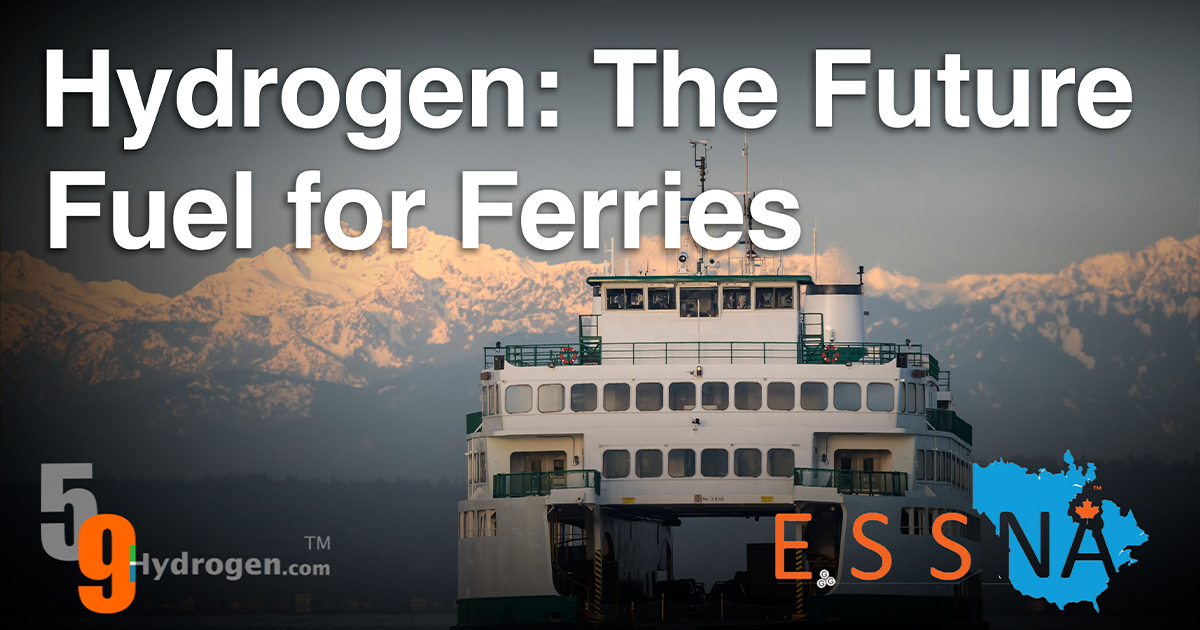Why Hydrogen is the Future Fuel for Ferries — and What’s Holding It Back
As nations pursue net-zero targets and clean transportation mandates, maritime fleets—particularly ferries—have become a growing focus. Ferries are essential to coastal communities, regional economies, and tourism industries. But they also represent a significant emissions challenge: most operate on diesel, generating greenhouse gases and harmful particulates in environmentally sensitive areas.
The question is no longer if ferries should transition to cleaner fuels — it’s how. And hydrogen might be the most promising answer.

Why Hydrogen Makes Sense for Ferry Fleets
Hydrogen fuel cell technology offers a unique set of advantages for ferries that other clean energy solutions—like batteries or biofuels—struggle to match:
Quick Refuelling, Long Range
Ferries operate on tight schedules, and extended downtime for recharging can disrupt entire routes. Hydrogen fuel cell systems, especially those using 700 bar (H70) dispensing, offer refueling times comparable to diesel, without sacrificing range.
Lower Weight, Higher Payload
Unlike heavy battery packs, hydrogen systems are lightweight and compact. This allows for more passengers, vehicles, or cargo to be carried without compromising energy efficiency.
Zero Emissions
When ferries run on hydrogen fuel cells, the only byproduct is water vapor. This helps protect marine ecosystems and improves air quality in port cities—supporting regional climate action plans and compliance with international maritime standards.
Easy Retrofit Potential
Hydrogen propulsion systems can be integrated into existing ferry hull designs or retrofitted into older vessels, making the transition more cost-effective than fully rebuilding fleets from scratch.
What’s Slowing Hydrogen Adoption?
Despite the clear benefits, many ferry operators and governments face a common barrier: infrastructure.
Producing, purifying, and dispensing high-quality hydrogen at port is no small feat. Traditional supply chains require trucking liquid hydrogen or storing large volumes on-site—both costly and logistically complex.
And without the ability to reliably refuel at port, even the best hydrogen ferry becomes just a concept.
Solving the Infrastructure Gap: ESSNA™ Hydrogen Dispensing
That’s where ESSNA™ comes in.
ESSNA™ offers a modular, on-site hydrogen dispensing system that makes clean maritime transport viable—right now.
- ✅ On-Site Generation: Hydrogen is produced at the port, eliminating delivery delays or high transport costs.
- ✅ Fuel Cell Purity: ESSNA™ systems purify hydrogen to 99.999%, ensuring optimal fuel cell performance.
- ✅ Scalable Deployment: Systems are containerized and modular, making them ideal for pilot projects or full-scale rollout across ferry networks.
By solving the last-mile infrastructure challenge, ESSNA™ unlocks the full potential of hydrogen for maritime transport.
A Blueprint for Government and Transit Authorities
To take the first step toward clean ferries, agencies and operators should:
- Build the Energy Model: Develop the ESSNA_EMAP™ Energy and Decarbonization Model.
- Assess Routes: Identify routes where hydrogen’s long range and quick refueling offer clear operational advantages.
- Start Small: Launch a pilot with a retrofitted ferry or dual-fuel vessel to validate performance.
- Install Smart Infrastructure: Partner with hydrogen providers like ESSNA™ to deploy flexible, scalable fueling systems at port.
Hydrogen is not a far-off solution — it’s here. And with the right infrastructure, it’s ready to scale.
Final Thought
The maritime sector is poised for transformation. With hydrogen, ferries can deliver the same reliability and range as diesel—but without the emissions. The only thing standing in the way is access to clean, high-pressure hydrogen at the dock.
ESSNA™’s hydrogen dispensing systems are purpose-built to solve this problem—making zero-emission ferry fleets not just possible, but practical.
Want to explore hydrogen dispensing for your port or ferry system?: https://www.energysecurity-na.com/contact-us

